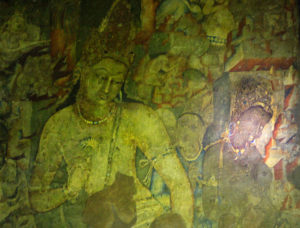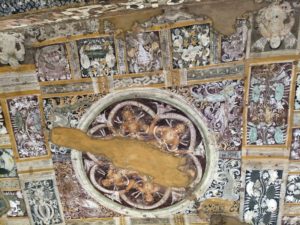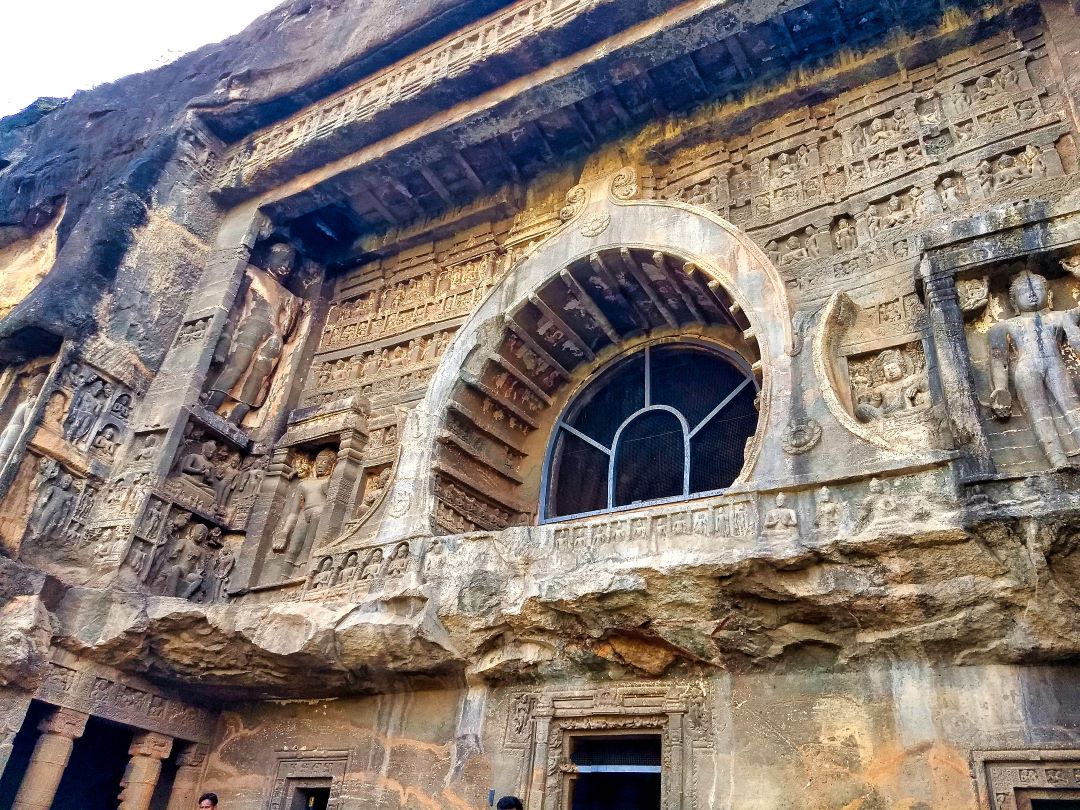Ajanta Cave 26 is a large chaitya-griha dating to the fifth century. It has a big hall with ribbed ceiling and a stupa at one end. The surrounding walls have fine sculptures. Chaitya-griha is a Sanskrit phrase which means “shrine”.
History of Ajanta Cave 26
Construction of Ajanta Cave 26 began in the fifth century. According to experts, the construction occured during the short period between 460 and 480 CE. Hindu king Harishena was the principal patron. He was a tremendous supporter of Buddhist architecture, art and culture. After his death, work on the cave gradually came to an end.
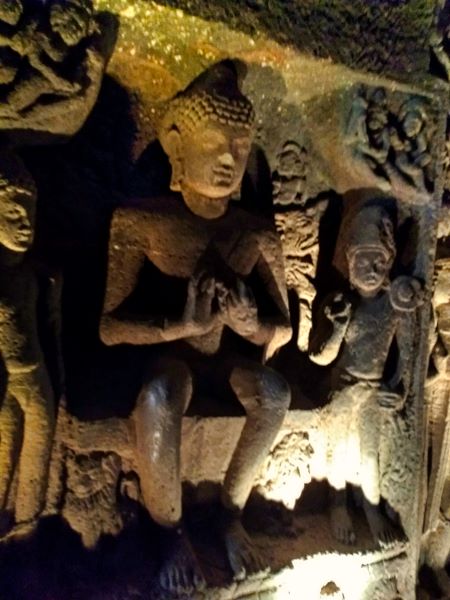
Cave 26 has been built on a horse-shoe shaped cliff along river Waghora. Successive volcanic eruptions created the cliff. The basalt rock has horizontal layers. The layers are apparent in some of the sculptures. The artists have used different techniques and tools to work on the rock layers.
Construction of Ajanta Cave 26
At the centre of Cave 26 is a semi-circular area with a high hemispherical roof. The roof has rock-cut ribs. Towards the back of the area is the Buddha sculpture. It has a seated Buddha in front. The base has 18 panels and another 18 panels above it. The Buddha has a three-tiered torana and angels hover above him. On the top is a nine-tiered holy harmika. The circumambulatory path around the shrine is elaborately carved.
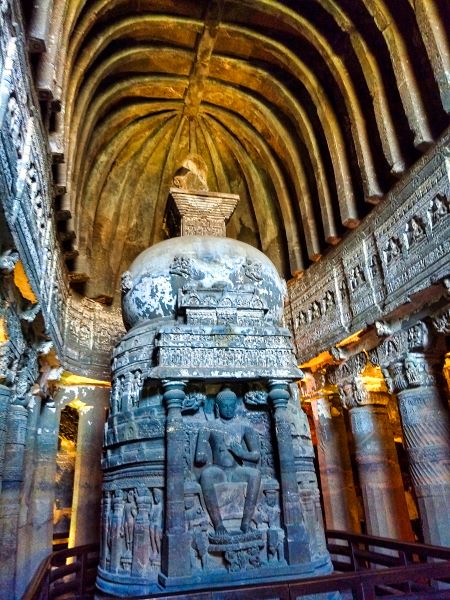
The stupa or prayer hall has pillars on both sides. The pillars and walls have considerable carvings of Buddhist themes. Many of the pillars and walls were in disrepair and have gone through much restoration work. Beyond the pillars is an aisle with fine sculptures on the wall.
Sculptures
The wall on the left side near the entrance has a massive Buddha sculpture. Here Buddha is lying on his right side. The sculpture has a length of 7 metres. The panel below the sculpture shows Buddha’s disciples and celestial figures float above. This is one of the grandest and most sensitive depiction in all of Buddhist art. The Mahaparinirvana of the Buddha, when he achieved release from the mortal world, is a monumental sculpture.
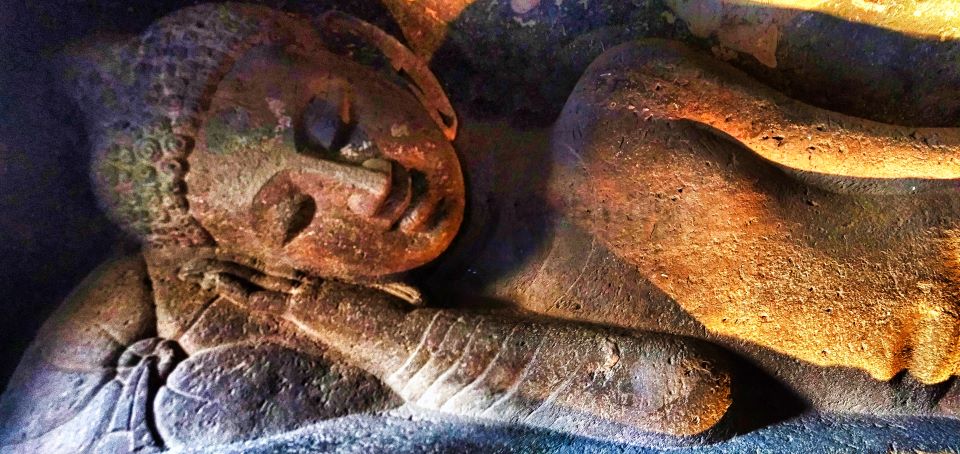
Near this sculpture is another larger panel. Mara Vijay is the only sculpture based on Jataka Tales. Here Lord Buddha is seated in Dhyan Mudra under a Bodhi tree. Mara (a demon) is riding his elephant Girimekhala to attack Buddha with his tenfold army. His three daughters Taha, Arati and Raga attempt to dissuade Siddhartha from the path of Buddhism through sensuous moves. The event in this sculpture is part of the enlightenment of Buddha. According to the narrative, there is a dialogue between Buddha and Mara. Buddha has his right hand pointing towards the earth in Bhumispartan Mudra. This mudra, formed with all five fingers of the right hand extended to touch the ground, symbolises Buddha’s enlightenment under the Bodhi tree. Then he summoned the earth goddess, Sthavara, to witness his attainment of enlightenment.
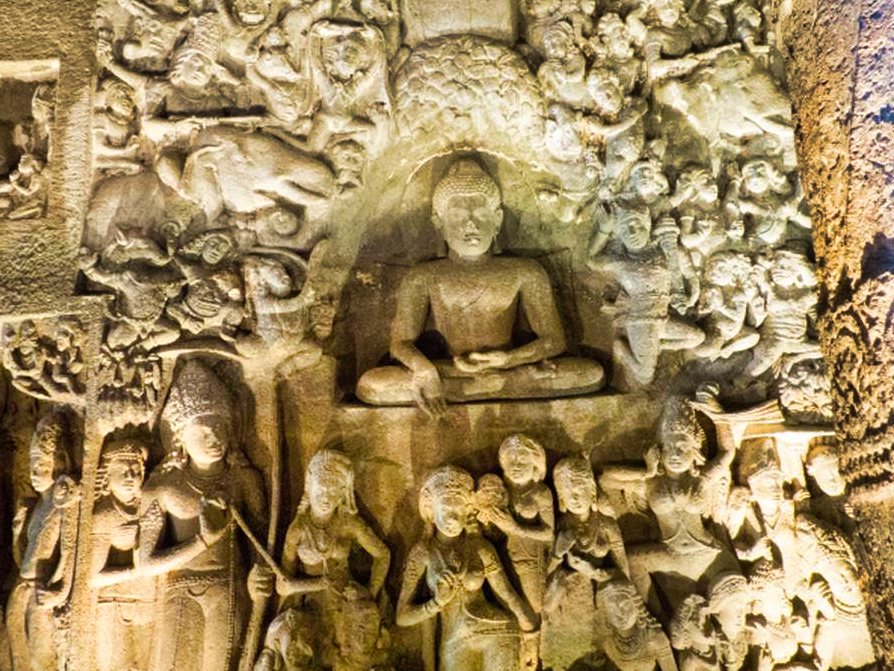
The wall on the right is full of sculptures. The lighting is dim with LED lights. The use of flash is prohibited. Hence photography inside the cave has its challenges.
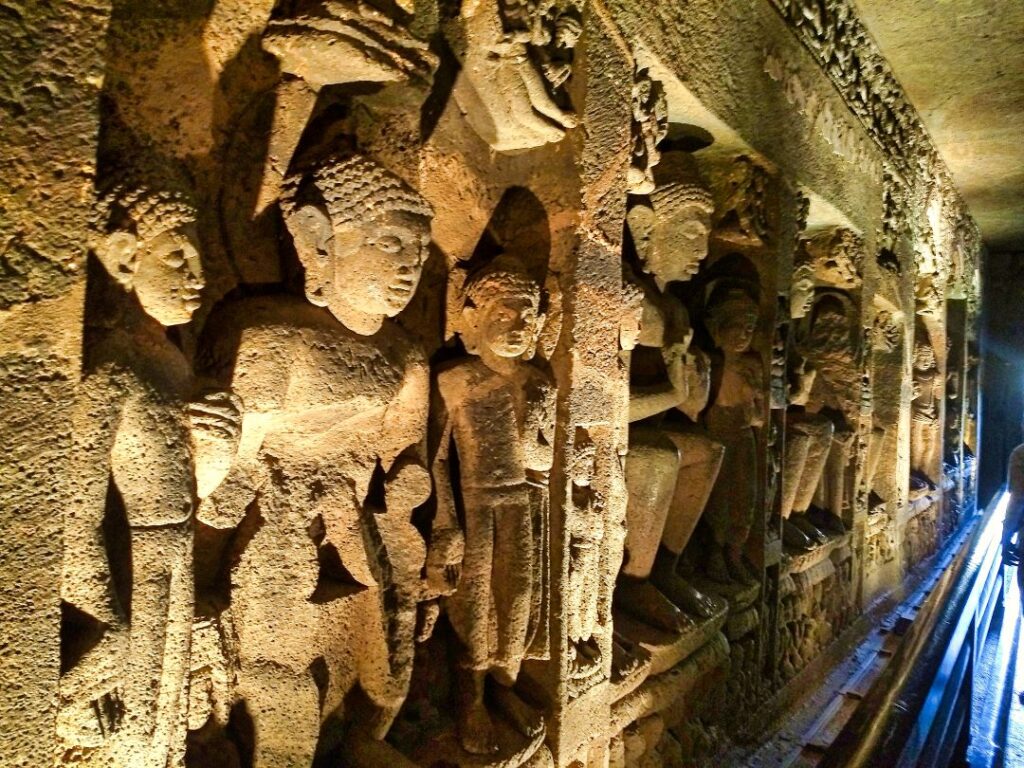
Getting There
The nearest railway stations are Aurangabad (106 km) and Jalgaon (56.7 km). Aurangabad Airport (IXU) is the closest airport, 111 km (2 hr 31 min) via NH 753F. The airport is well connected to Mumbai, Jaipur, Udaipur and Delhi. Travellers can reach Aurangabad by air and proceed to Ajanta Caves by taxi or bus. The distance between the Aurangabad airport and the Central Bus station is 9.3 km which is reachable in 20 min.
If you liked the post, you could…
Join more than 5,000 fans of UASATISH by liking us on Facebook, or follow us on Twitter and Instagram.
Related posts:
